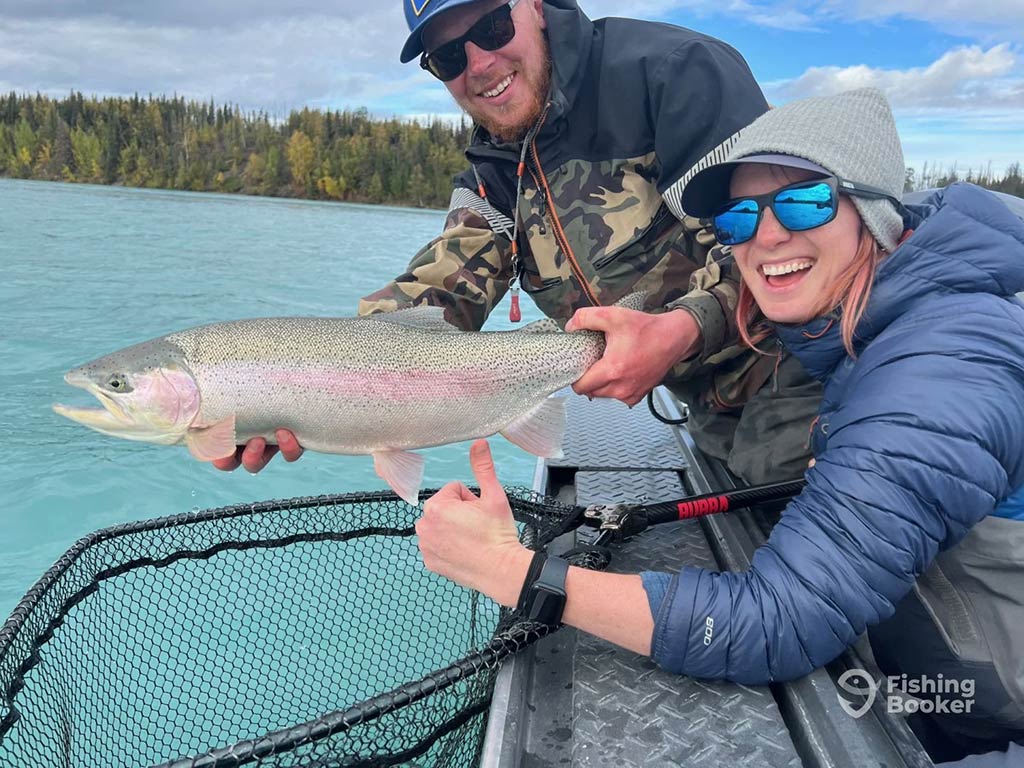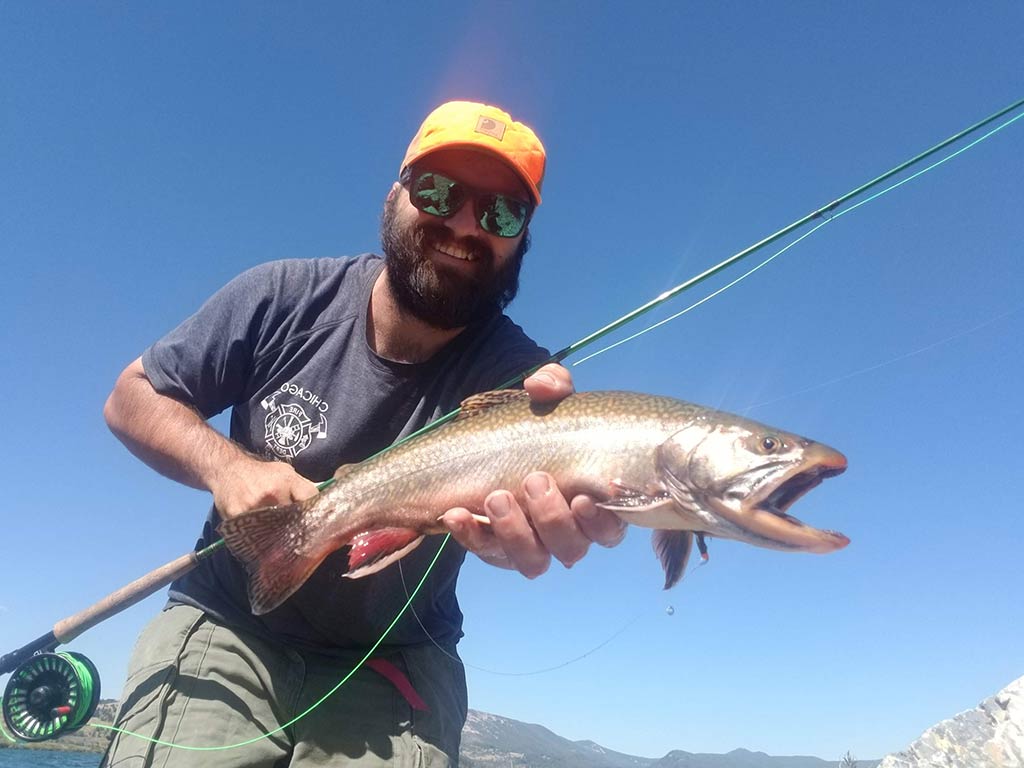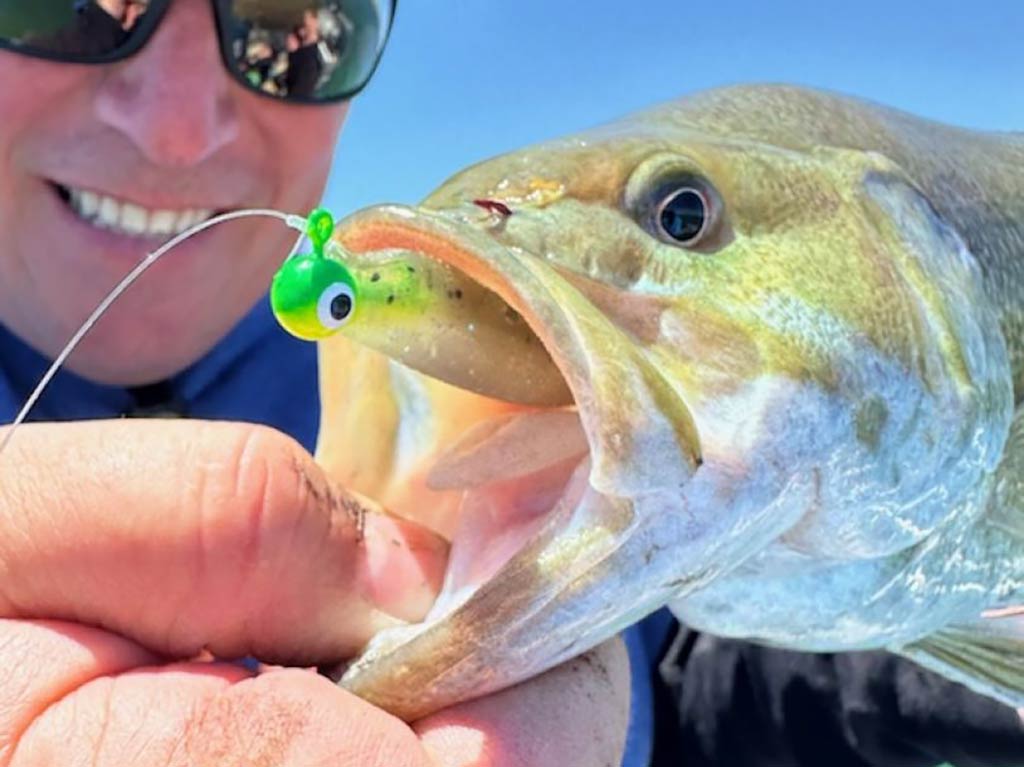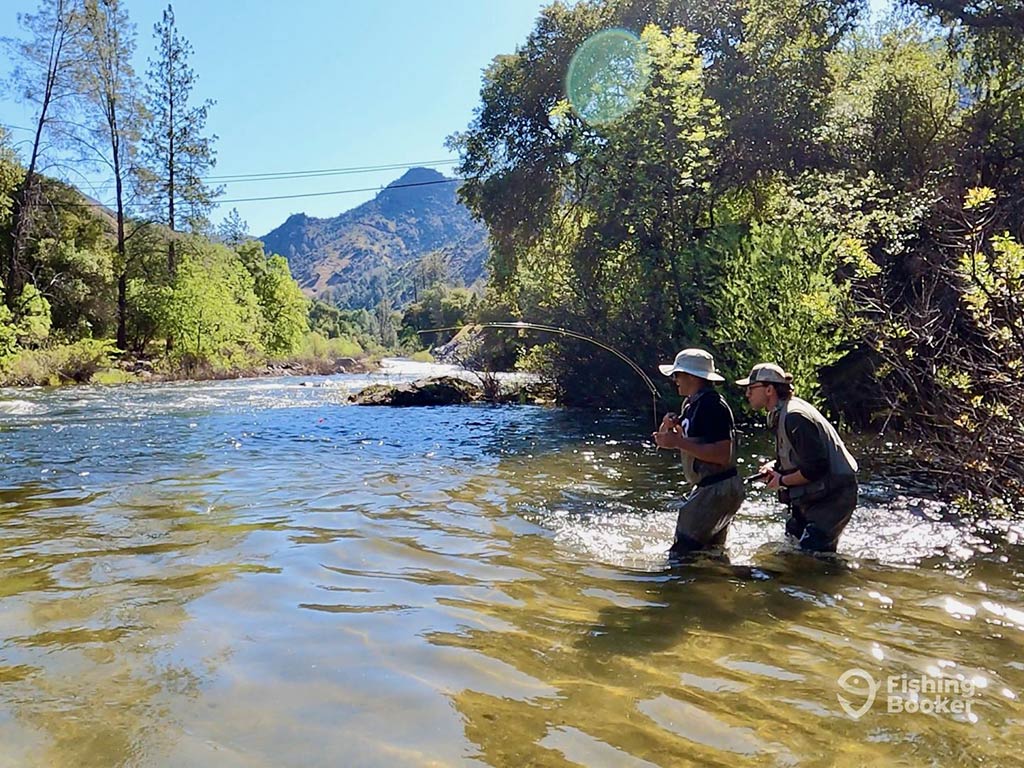You might be surprised to learn that Trout and Bass can live in overlapping environments. Even in places where they don’t mix, you’ll find similarities in their behavior. Learning to fish for each species individually is important, but a well-rounded angler can target both with the same techniques in some situations. It’s often not a case of Trout vs. Bass fishing…

And that’s why I’m here with this article. I’ll talk you through some of the similarities and differences between Trout and Bass fishing. I’ll give you some tips on techniques, where to find them, and more. By the time you’re done reading, not only will you have a better understanding of these two species (well, families of species, technically speaking), but you’ll also be ready to hit the water!
When Trout and Bass Overlap
Some of my most memorable fishing experiences combine both Bass and Trout on single trips. Many of my favorite waters also have both species. In Oregon, several great Steelhead rivers are chock-full of Smallmouth Bass.
In my home state of Montana, I often target Smallmouth Bass, Largemouth Bass, Trout, and even Pike in the same waters. Of course, I also fish for each species separately in places where populations don’t overlap, but they can cohabitate.
The nice thing about having both Trout and Bass in a single river is the ability to change course based on conditions. When the weather and waters are cold, I tend to favor Trout fishing. As the temperatures rise to levels where Trout are stressed, I switch to Bass fishing. In Montana’s Bitterroot River, Trout favor the main river channel, riffles, and runs, while Largemouth Bass lurk in stillwater sloughs. It’s fun to carry two rods, switching between each species throughout the day.
Similarities Between Trout and Bass Fishing

Trout are coldwater species, while Bass thrive in warm water conditions. In terms of environmental preferences, they have different requirements but there are overlapping segments where they can both exist in the same ecosystems.
Bass and Trout both eat insects, although Trout tend to favor insects as a primary calorie source in many cases. Bass and Trout both forage as well. They can – and will – eat minnows, crayfish, mice, birds, and even other fish. When I was fishing for Trout in Argentina, I ran into a mouse hatch at one point! Rainbow Trout were gorging on a surge in mouse populations much in the same way a Largemouth or Smallmouth Bass would eat rodents.
A few other similarities exist between Bass and Trout species. They both utilize structure for safety and for ambushing prey. I’ve caught plenty of Bass and Trout around logjams, rocks, and beneath overhanging branches. This also helps anglers read water effectively when switching between species. When in doubt, fish against structure.
Differences Between Trout vs. Bass Fishing

The big difference between Trout and Bass is environmental and temperature needs. Trout thrive in cold waters and you’ll find them actively eating with water temperatures in the 40–70-degree range. As waters reach that 70-degree threshold, however, it becomes dangerously warm for Trout.
Smallmouth and Largemouth Bass, on the other hand, prefer water temperatures in the 70–85-degree range. While Bass thrive in warmer temperatures, you can see where the overlap happens! Both Bass and Trout are active when water temperatures are in the 60s.
The other major difference to consider involves oxygen requirements. Trout thrive in waters with high levels of dissolved oxygen. As temperatures rise, the need for oxygen increases. In rivers, this pushes Trout into fast-moving riffles and runs. In lakes, Trout move to deeper water where temperatures are cooler.
Bass have less need for oxygen and are comfortable in stillwater areas. Weed beds and shallow bays where Trout can’t survive are prime for Bass fishing.
Where to Fish for Trout vs. Bass
Reading water for Trout and Bass is nuanced, and the holding waters vary based on conditions and ecosystems. As mentioned earlier, structure is a universal preference for both varieties of fish. Look for log jams and rocks, and focus on drop-offs as well. Transition zones in lakes and rivers are great for many different species.
Trout are more prevalent in places with consistently cold water. Spring creeks and rivers that form from snowmelt and mountain conditions make for great Trout waters. Bass prefer slower-moving rivers and lakes with strong populations of forage and terrestrial food sources. Both species live in lakes and reservoirs across North America, so you can take your pick!
How to Target Trout vs. Bass
You can use the same equipment and techniques to target both species, but each also has specialization to consider as well. For example, I use different-sized rods with different actions, lines, and rigging for each species. I do have general-use rods that can also catch both, but I’ll break down the differences below.
Techniques and Gear

Both Bass and Trout will respond to a few of the same techniques. Cast and retrieve lures, hang a jig, fish a worm on the bottom or under a bobber, etc. I love fly fishing for both types of fish, as well. A basic streamer pattern or topwater popper will catch just about anything.
For a general approach, consider using a spinning rod as it’s the most friendly for all situations. A medium-weight rod can handle most Trout and Bass, although you might want to size up for Striped Bass. Spoons, spinners, and crankbaits will catch both types of fish, as will baits like minnows and worms.
For a more specific approach to Bass, trade out the spinning setup for a baitcasting setup. You can thumb the spool and become extremely accurate with this style of fishing. It can also work for Trout, but most anglers favor a light to medium spincasting outfit for Trout.
As mentioned, I love fly fishing for both species. I like a short, 7–8′ rod in the 7–8 wt range with a heavy weight-forward line for Bass. The rod loads aggressively and can cast long distances with less effort. It also carries poppers, streamers, and wind-resistant flies well.
For Trout, a 9′ rod in the 4–6 wt range with moderate line tapers is the go-to option. They can handle larger flies but offer more precision and control when casting dry flies and basic nymph rigs.
Baits and Lures

I’ve touched a bit on baits and lures, and this really is something that’s situational. Anglers can catch just about any species on a classic live or soft worm. Crayfish and minnows also work for both species.
There are plenty of lures that crossover as well. Jigs are my personal favorite for targeting Bass and Trout. If you can find the right depth, a jig is flat-out deadly. Jigs also work in different conditions. You can fish them slow, fast, or static to match the mood.
Size is the big thing to consider for each species. A nice Rapala will catch anything, but you’ll want to size down for a smaller Trout stream and size up for bigger Trout and Bass. Play with different sizes and colors, and you’ll find the right lure mix for the specific body of water.
Trout vs. Bass Fishing FAQs
Will you choose Trout, Bass, or both?

While Trout and Bass are quite different, anglers can learn from each species and apply that knowledge to the other. I’ve long watched and learned from high-level Bass anglers and adapted techniques to target larger, predatory Brown Trout. You can always find something new and interesting about each species that is relevant to the other. Get out there and find for yourself!
Do you fish for Trout and Bass? We’d love to hear about the similarities and differences you notice. Chime in below with your stories and anecdotes!
